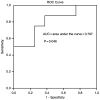Utility of functional imaging in prediction or assessment of treatment response and prognosis following thermotherapy
- PMID: 20170362
- PMCID: PMC2854850
- DOI: 10.3109/02656730903286214
Utility of functional imaging in prediction or assessment of treatment response and prognosis following thermotherapy
Abstract
The purpose of this review is to examine the roles that functional imaging may play in prediction of treatment response and determination of overall prognosis in patients who are enrolled in thermotherapy trials, either in combination with radiotherapy, chemotherapy or both. Most of the historical work that has been done in this field has focused on magnetic resonance imaging/magnetic resonance spectroscopy (MRI/MRS) methods, so the emphasis will be there, although some discussion of the role that positron emission tomography (PET) might play will also be examined. New optical technologies also hold promise for obtaining low cost, yet valuable physiological data from optically accessible sites. The review is organised by traditional outcome parameters: local response, local control and progression-free or overall survival. Included in the review is a discussion of future directions for this type of translational work.
Figures








Similar articles
-
Functional brain imaging: an evidence-based analysis.Ont Health Technol Assess Ser. 2006;6(22):1-79. Epub 2006 Dec 1. Ont Health Technol Assess Ser. 2006. PMID: 23074493 Free PMC article.
-
[MRI-assisted thermometry for regional hyperthermia and interstitial laser thermotherapy].Radiologe. 2004 Apr;44(4):310-9. doi: 10.1007/s00117-004-1032-x. Radiologe. 2004. PMID: 15057421 Clinical Trial. German.
-
Early prediction of response to neoadjuvant chemotherapy in breast cancer patients: comparison of single-voxel (1)H-magnetic resonance spectroscopy and (18)F-fluorodeoxyglucose positron emission tomography.Eur Radiol. 2016 Jul;26(7):2279-90. doi: 10.1007/s00330-015-4014-7. Epub 2015 Sep 17. Eur Radiol. 2016. PMID: 26376886
-
Magnetic resonance imaging: a potential tool in assessing the addition of hyperthermia to neoadjuvant therapy in patients with locally advanced breast cancer.Int J Hyperthermia. 2010;26(7):625-37. doi: 10.3109/02656736.2010.499526. Int J Hyperthermia. 2010. PMID: 20849258 Free PMC article. Review.
-
Imaging tumour physiology and vasculature to predict and assess response to heat.Int J Hyperthermia. 2010;26(3):264-72. doi: 10.3109/02656730903585982. Int J Hyperthermia. 2010. PMID: 20388023 Review.
Cited by
-
Targeting tumor perfusion and oxygenation to improve the outcome of anticancer therapy.Front Pharmacol. 2012 May 21;3:94. doi: 10.3389/fphar.2012.00094. eCollection 2012. Front Pharmacol. 2012. PMID: 22661950 Free PMC article.
-
Current Challenges in Image-Guided Magnetic Hyperthermia Therapy for Liver Cancer.Nanomaterials (Basel). 2022 Aug 12;12(16):2768. doi: 10.3390/nano12162768. Nanomaterials (Basel). 2022. PMID: 36014633 Free PMC article. Review.
-
Minimally invasive intra-arterial regional therapy for metastatic melanoma: isolated limb infusion and percutaneous hepatic perfusion.Expert Opin Drug Metab Toxicol. 2011 Nov;7(11):1383-94. doi: 10.1517/17425255.2011.609555. Epub 2011 Oct 7. Expert Opin Drug Metab Toxicol. 2011. PMID: 21978383 Free PMC article. Review.
References
-
- Garman KS, Nevins JR, Potti A. Genomic strategies for personalized cancer therapy. Hum Mol Genet. 2007 Oct 15;16 Spec No. 2:R226–32. - PubMed
-
- Bonnefoi H, Potti A, Delorenzi M, Mauriac L, Campone M, Tubiana-Hulin M, et al. Validation of gene signatures that predict the response of breast cancer to neoadjuvant chemotherapy: a substudy of the EORTC 10994/BIG 00-01 clinical trial. Lancet Oncol. 2007 Dec;8(12):1071–8. - PubMed
-
- Mendiratta P, Febbo PG. Genomic signatures associated with the development, progression, and outcome of prostate cancer. Mol Diagn Ther. 2007;11(6):345–54. - PubMed
Publication types
MeSH terms
Grants and funding
LinkOut - more resources
Full Text Sources
Other Literature Sources
